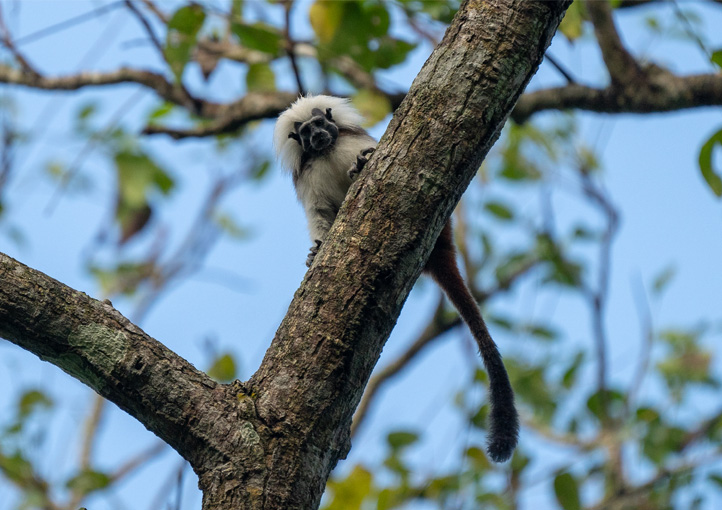Dear reader,
I would also like to recommend our Colombia travel guide, which provides a perfect overview of the tourist attractions in Colombia. Enjoy reading it!
Content
ToggleColombia’s wildlife
Colombia is a paradise for wildlife enthusiasts. It is ranked second in the world for biodiversity, behind only Brazil. The country hosts a staggering variety of animals, ranging from mammals and birds to reptiles and fish.
In this post, I will introduce you to some of the most amazing animals that live in Colombia and tell you where you can see them in detail. Get ready to be amazed by the beauty and diversity of Colombia’s wildlife!
This is just a small selection of superlative Colombia. And that’s not all, there are always new species to be found in Colombia, as the areas of the Amazon and the Pacific rainforest have hardly been researched. If you want to visit the different regions in Colombia, you also should know what languages are spoken.
Amazon Rainforest Animals
The Amazon rainforest covers more than half of Colombia’s territory and is home to some of the most diverse and fascinating animals in the world. From the largest snake to the smallest frog, from the most powerful predator to the most playful mammal, the Amazon rainforest animals will amaze you with their beauty and adaptability. Here are some of the ones you can see in detail:
Anaconda
Unfortunately, I haven’t been lucky enough to see an anaconda in the wild. When I was in the Llanos, the guide pointed out an almost dry water hole and explained that there is an almost 5-meter long anaconda inside the mud. But we refrained from pulling it out. Despite that, I have seen many other large and small snakes during my time in Colombia. However, an anaconda is still pending.
The greatest chances in the Llanos are at the end of the dry season, as the snakes then retreat into the remaining water holes.
Anacondas occur across the east of the Andes. It is considered the heaviest and one of the longest snakes in the world. I found no clear information about the maximum length. But snakes up to 5 meters (16.4 feet) in length and over 120 kg body weight do occur. A native Indian in Leticia also told me that there are anacondas up to 12 meters (40 feet) in length in his residential area. I cannot judge whether this is true or should be placed in the world of fables.
Anyway, anacondas are beautiful animals. Interestingly, these are almost defenseless on land. In the water, however, one should avoid chance encounters. The snake would win a duel there with 99.99% certainty.
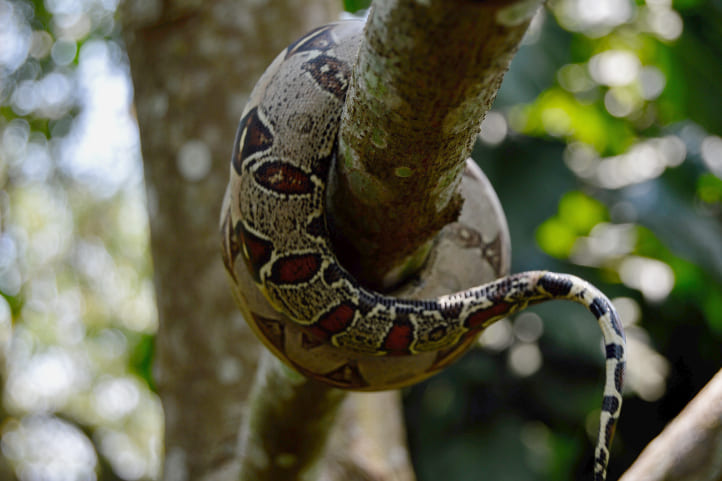
Electric Eel
An animal that many people only know from the zoo, this fish is not uncommon in Colombia and you can find it east of the Andes. The eel can send out surges of up to 800 volts and 1 ampere. Therefore, one should refrain from touching this fish and only getting close to it in the water.
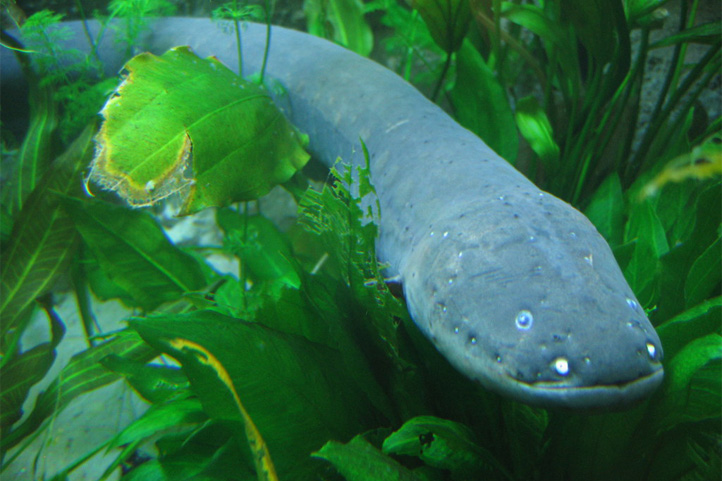
Scott / CC BY-SA 2.0 (https://creativecommons.org/licenses/by-sa/2.0/)
Giant Otter
Large otters can be found in Colombia in the Amazon and Orinoco areas. The giant otter, which lives in families, is up to 2 meters long and is very curious and sociable. I have seen and heard them several times from the boat in Casanare.
Harpy
The harpy is actually not just a mythical creature. This bird really exists and is very impressive. The harpy feeds primarily on mammals such as sloths and monkeys.
I saw a specimen in a shelter in Bogota, a really impressive animal.
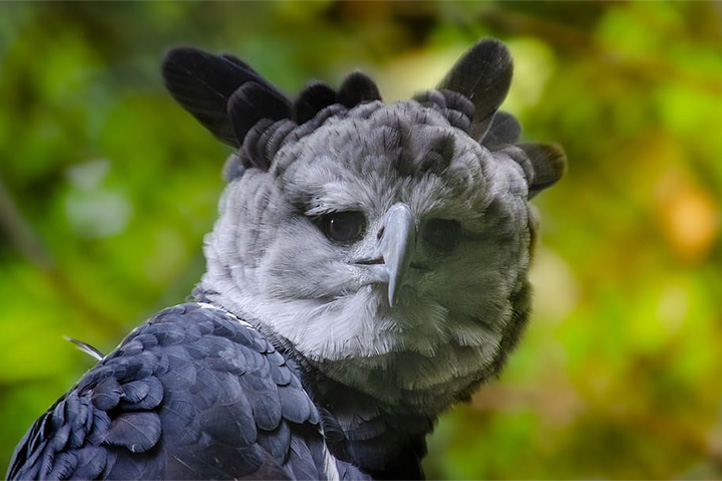
Jaguar
Jaguars are found in the wild in Colombia, but I’m not sure if I want to meet one of these animals on a hike.
These animals are at the top of the food chain and have one of the strongest teeth in the animal world. The powerfully built cats are excellent swimmers and weigh up to 100 kilograms.
In the Llanos, photos are mostly shot with photo traps to examine the stocks.

Piranha
Another animal from the horror cabinet and protagonist in many horror films. There are between 30 and 60 different species and only a few are dangerous to humans. The piranha is actually a scared rabbit and this despite its sharp teeth.
Piranhas are mainly found in the Amazon region. You can also fish and eat them, but they only have about as much meat as a marathon runner.
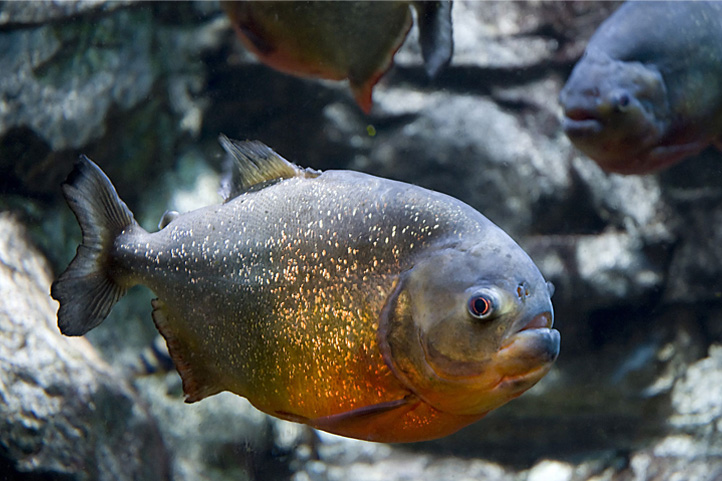
Gregory Moine / CC BY 2.0 (https://creativecommons.org/licenses/by/2.0/)
Pirarucu
The Pirarucu is worshiped in regions of Colombia and is also an excellent edible fish. It is up to four and a half meters long and weighs up to 200 kilograms. In Leticia, I fed a captive Pirarucu, which is a real spectacle.
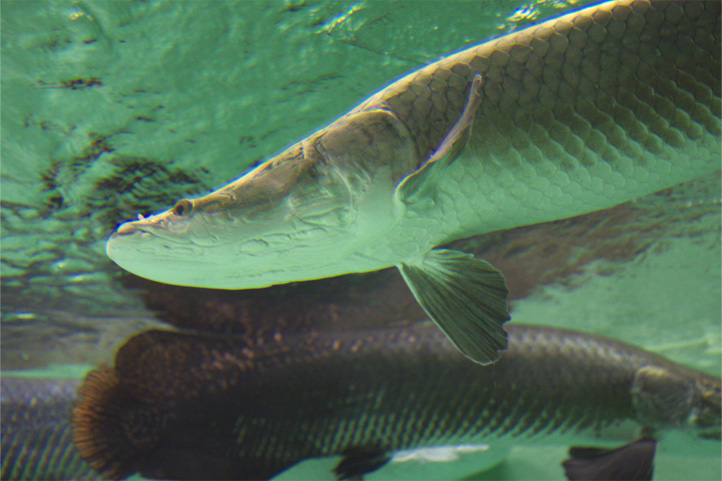
tab2_dawa / CC BY 2.0 (https://creativecommons.org/licenses/by/2.0/)
Pink River Dolphin
Visiting the Amazon without seeing the Pink River Dolphins is like traveling to Colombia and not drinking coffee. You can actually see these beautiful animals on every Amazon cruise. These can also be found in the Meta department in the Llanos.
Also, you can swim with the river dolphins.
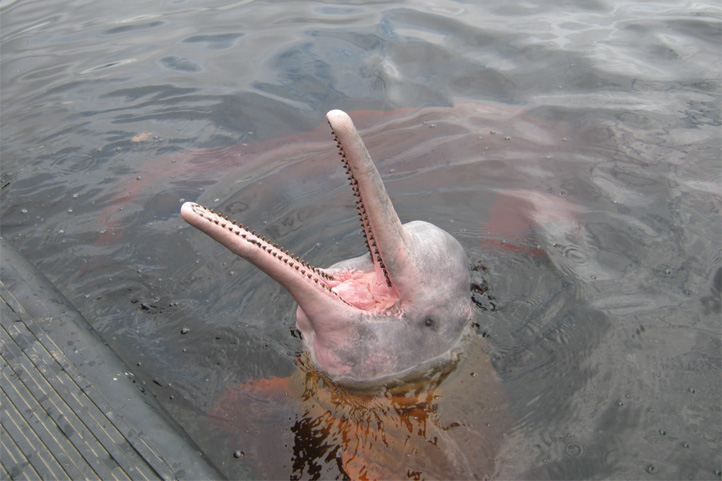
Jorge Andrade / CC BY (https://creativecommons.org/licenses/by/2.0)
Poison Dart Frog
Who has never heard of the infamous poison dart frog? Although mentioned in many films and stories, the habitat of this amphibian is limited to a very small space on the Colombian Pacific coast.
The poison dart frog is one of the most poisonous inhabitants of the animal kingdom and is also the most poisonous frog species of all. It belongs to the tree frog family and is up to five centimeters tall.
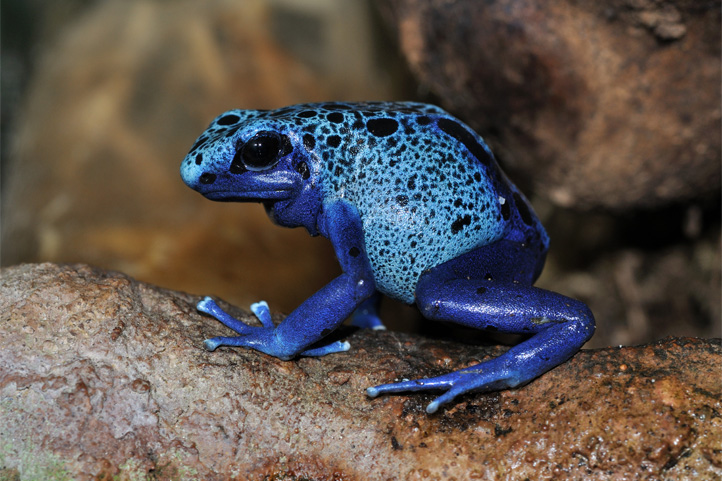
Quartl / CC BY-SA (https://creativecommons.org/licenses/by-sa/3.0)
Glass Frog
Like the name, there are Colombia frogs that are made of glass. You have to be careful not to break them when you touch them. Of course, this is just fun but there are actually glass frogs in Colombia in the Sierra Nevada de Santa Marta.
I have never seen a glass frog myself, but I was told on-site that you can see through these frogs. It’s best to look for the frogs at night.
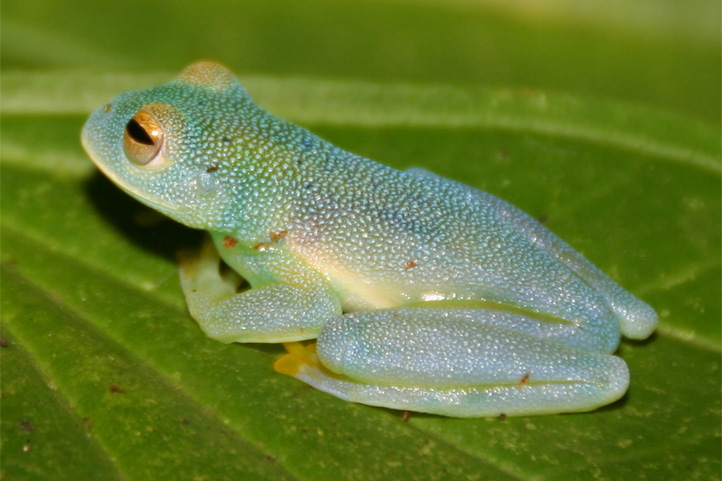
JurriaanH / CC BY-SA (https://creativecommons.org/licenses/by-sa/3.0)
Tapir
I can still remember when I saw my first tapir at the zoo in Zurich. Here in Colombia, we have tapirs in the wild. I haven’t seen any here myself, but I’m sure it will come.
Different types of tapirs can be found in Colombia in different regions.
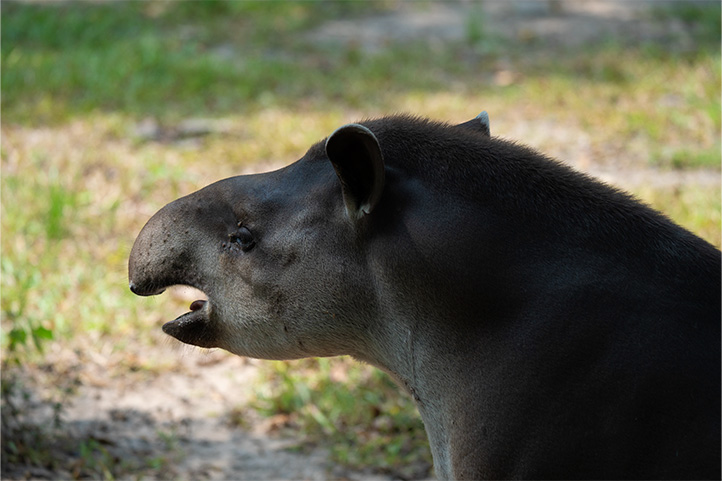
Andean Mountain Animals
The Andean mountain range runs through Colombia from north to south and forms a natural barrier between the Pacific and the Caribbean coasts. The Andean mountain animals are adapted to the high altitudes, cold temperatures, and varied ecosystems of this region. From the only bear species in South America to the largest rodent in the world, from the majestic bird of prey to the glowing insect, the Andean mountain animals will impress you with their resilience and diversity. Here are some of the ones you can see in detail:
Spectacled Bear
The spectacled bear is the only representative of its genus that lives in South America. It reaches a length of over 180 centimeters and a weight of over 150 kilograms. It preferably lives in the Andes at 200 to 4,500 meters above sea level (656 – 14,800 feet above sea level).
I could see a spectacled bear in Nariño, they are very pretty.
Andean Condor
The Andean Condor is also the heraldic animal of Colombia. It can be found in individual Andean areas in Colombia, where the national population is estimated at around 180 animals. With a wingspan of over 3 meters (10 feet) and a weight of up to 15 kilograms, this lord of the air is unmistakable.
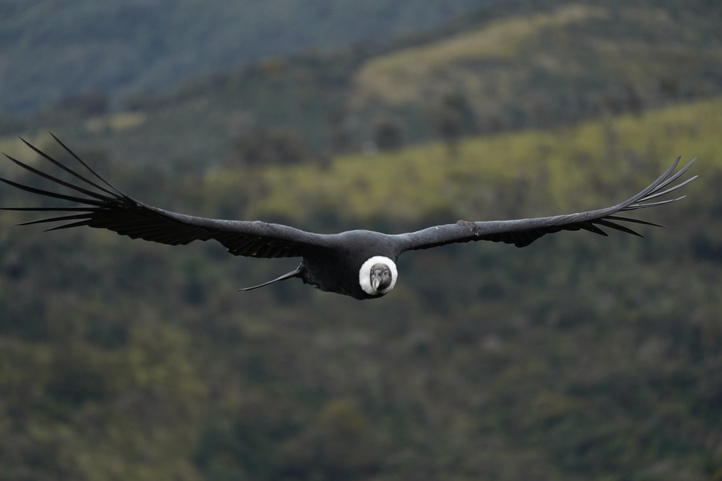
Chiguiro / Capybara
This animal, which is related to guinea pigs, mainly lives in water. They are excellent swimmers and the herds are usually large. Weighing up to 75 kilograms, these rodents are not exactly small.
Chiguiros can be seen in many areas east of the Andes. Their meat is very delicious and you can also get it in Bogota.
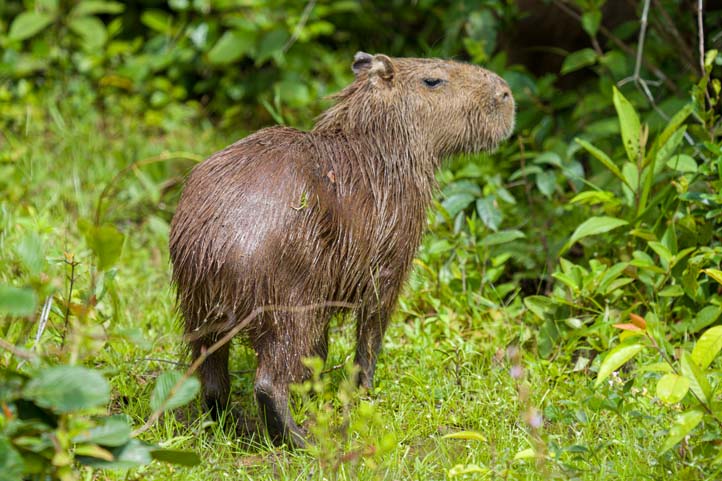
Firefly
Fireflies are found in many regions in Colombia and there are over 2,000 species worldwide. The glow is of course used for mating so that the beetles can be found each other in the dark.
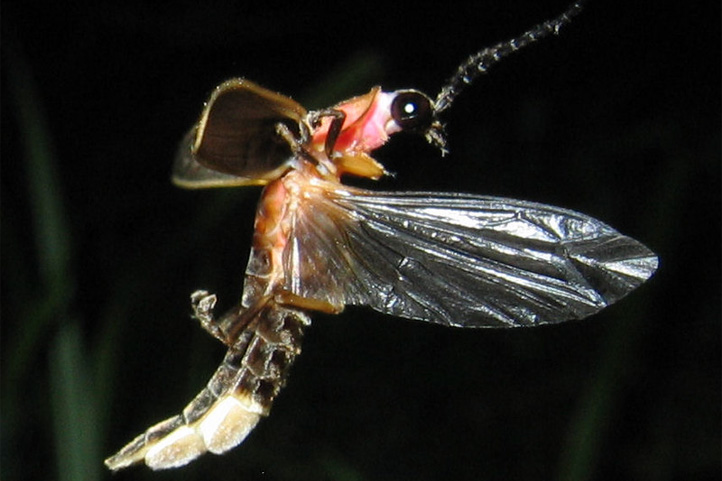
Terrry Priest / CC BY-SA 2.0 (https://creativecommons.org/licenses/by-sa/2.0/)
Giant Anteater
I have also seen the large anteater in Casanare, several times now. When we first met, we were only about 3 meters (10 feet) apart. The animals have poor eyesight and therefore recognize people late, if you do not move.
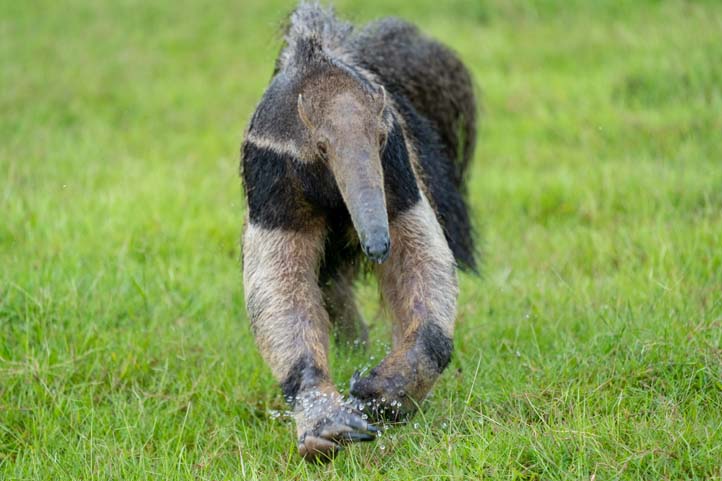
Armadillo
Armadillos are absolutely fascinating and remind me of walking handbags. I also saw one in Casanare.

Pacific Coast Animals
The Pacific coast of Colombia is one of the most biodiverse marine regions in the world. It hosts a rich variety of animals that live in the coral reefs, mangroves, islands, and open waters of this area. From the gentle giant of the sea to the fearsome predator of the deep, from the colorful bird of the shore to the elusive reptile of the swamp, the Pacific coast animals will enchant you with their grace and splendor. Here are some of the ones you can see in detail:
Humpback Whale
Colombia is probably one of the best countries for whale watching, as the giant mammals come to Colombia’s Pacific coast between June and November to mate or to give birth.
There are several destinations in Colombia from which you can watch whales. The offers are certainly not like in Canada, where you can dive into the sea with the most modern and highly motorized ships, but in Colombia, you can even watch the whales partially from the coast.
Hammerhead Shark
Hammerhead sharks are not found on every corner, but in the Colombian Pacific, you can find them in abundance on the island of Malpelo. Although the journey is difficult, this island is considered unique for shark watching.
Hammerheads grow up to 6 meters (20 feet) long and weigh 600 kilograms.

Kris-Mikael Krister / CC BY 2.0 (https://creativecommons.org/licenses/by/2.0/)
Caribbean Coast Animals
The Caribbean coast of Colombia is a tropical paradise with sandy beaches, turquoise waters, and lush vegetation. It attracts a wide range of animals that enjoy the warm climate, abundant food, and scenic views of this area. From the elegant bird of the lagoon to the spiny lizard of the desert, from the friendly mammal of the river to the exotic insect of the forest, the Caribbean coast animals will delight you with their charm and personality. Here are some of the ones you can see in detail:
Flamingo
Flamingos can be found in Colombia in the department of La Guajira at 2 locations. The pink color is due to a specialized diet.
Iguana
Iguanas can be found in Colombia in various areas where there is a corresponding minimum temperature. They become up to 2 meters long and should you approach them, they defend themselves with tail blows.
Especially on golf courses in Colombia, these pretty reptiles seem to feel comfortable.
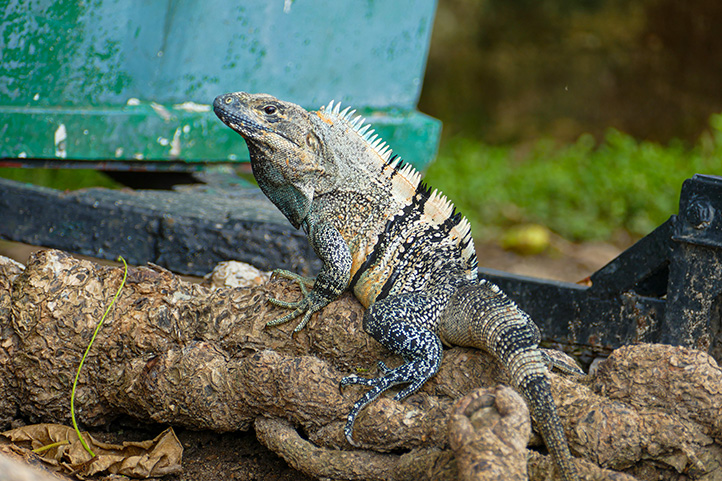
Other Animals
Colombia is such a diverse country that it’s impossible to fit all its amazing animals into a single category. Some of them live in more than one region or habitat, while others are unique to a specific place or ecosystem. From the mischievous monkey of the jungle to the lazy sloth of the tree, from the fierce panther of the savanna to the delicate butterfly of the flower, these other animals will surprise you with their skills and quirks. Here are some of the ones you can see in detail:
Monkeys
I could hardly believe it myself but in Colombia, there are 38 species with another 45 subspecies. Ten of these are endemic. On my travels across Colombia, I could see monkeys in all warmer regions, whether that was on the Pacific or the Caribbean coast, or of course in the Amazon and Orinoco regions.
The howler monkey that reaches the volume of a fighter jet taking off is certainly impressive. And since the list is huge, I refer to an excellent page from Wikipedia where you can see the species, photos, and habitat.
However, if you want to be climbed and besieged by a hundred monkeys, I can definitely recommend the monkey island in the Amazon region near Leticia. On the boat tour to Puerto Nariño, you make a stop there. However, you shouldn’t be too scared or sensitive. One of the monkeys felt so relaxed on my shoulder that he also did his business there.
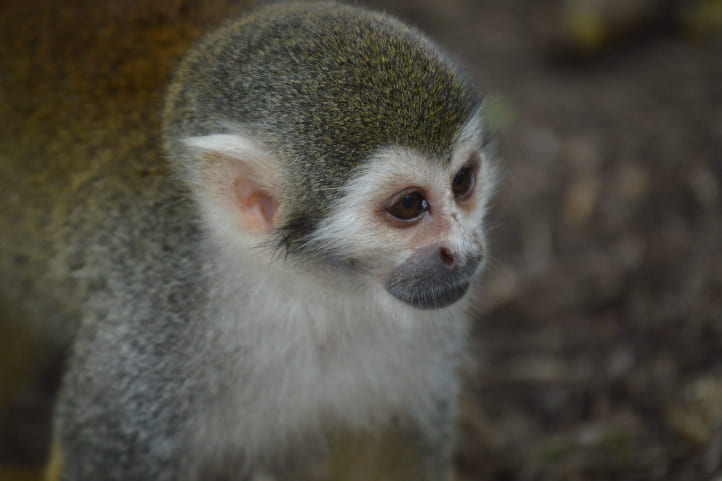
Sloth
Sloths are also common in Colombia and in some regions they are caught and passed around as a tourist attraction. Although you don’t see the stress that arises from the animals, this is a real ordeal for them. Sloths living in captivity usually only survive for a few weeks to months and are only replaced after they have died.
I therefore strongly advise against having a sloth put on you just to satisfy the selfish need for photos.
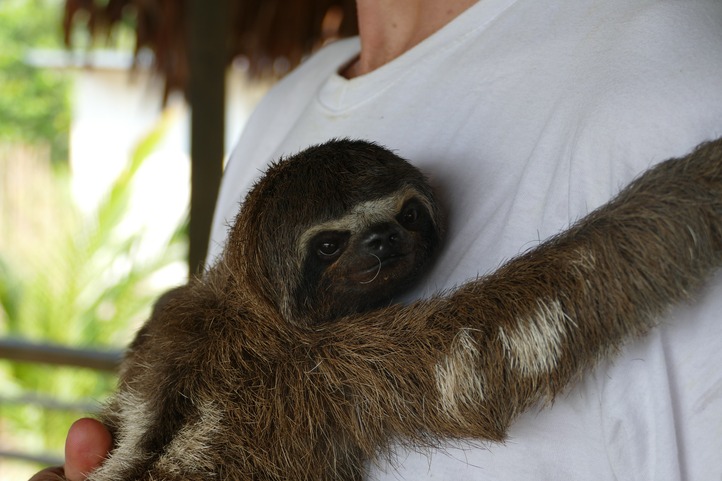
Mantis
Praying mantises occur in Colombia in many different sizes and shapes.
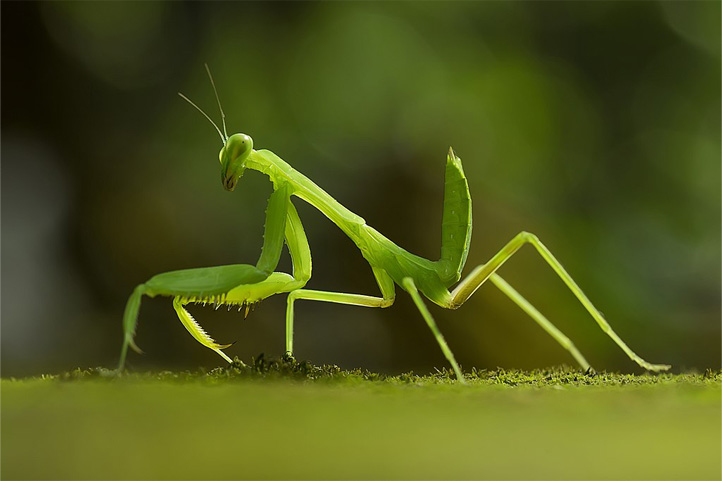
Azim Khan Ronnie / CC BY-SA (https://creativecommons.org/licenses/by-sa/4.0)
Caiman
Caimans are easy to see in Colombia. However, these will not be longer than 2.50 meters.
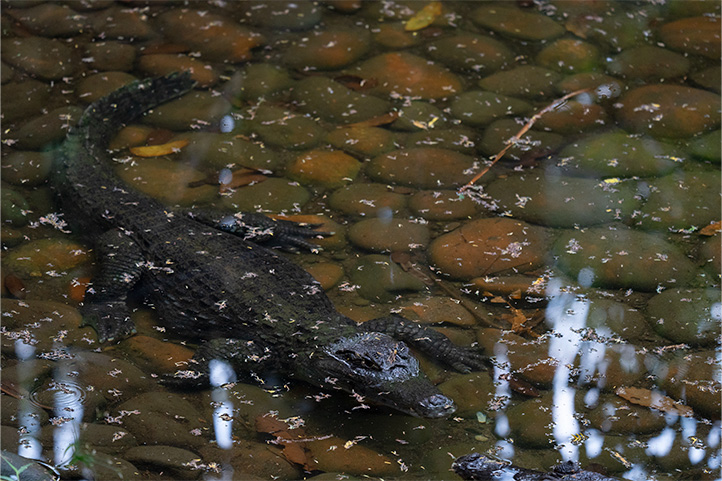
Hummingbirds
In Colombia, there are over 150 different hummingbird species and these can be found up to 4,000 meters (13,100 feet) above sea level in the Paramos. Colombia is a bird paradise and in some places, you can also feed these wonderful birds by hand.
Orinoco crocodile
This reptile from the dinosaur era is one of the largest crocodile species in the world. Specimens with a body length of up to 7 meters (23 feet) have already been reported and rumors have it that specimens with a body length of up to 9 meters (30 feet) are to be found in areas of difficult access in Colombia.
In reality, this animal is unfortunately in danger of extinction. However, in the department of Casanare, there is a breeding station where you can see these large and powerful animals from a safe distance.

Puma
The puma is also one of the inhabitants of Colombia. It is also called mountain lion and is up to 100 kilograms. Pumas can jump from the ground up to over 5 meters (16.5 feet) high. These beautiful cats are not tied to a single habitat and can be found in all regions of Colombia.
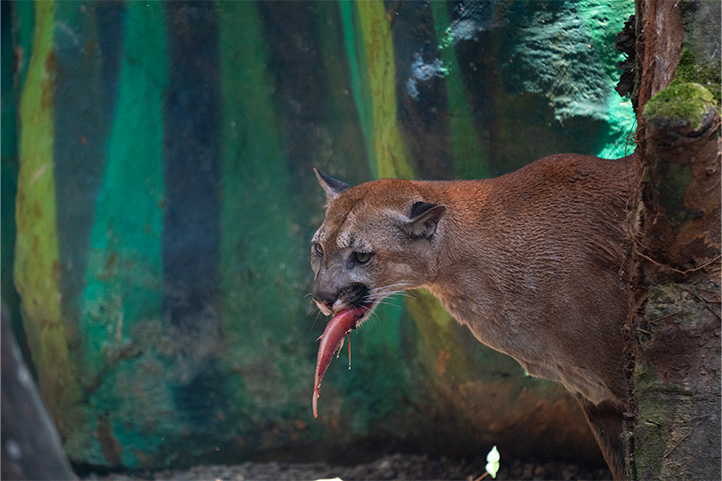
Butterfly
Colombia is known to be very biodiverse. There are therefore over 1,600 different butterfly species in this country.
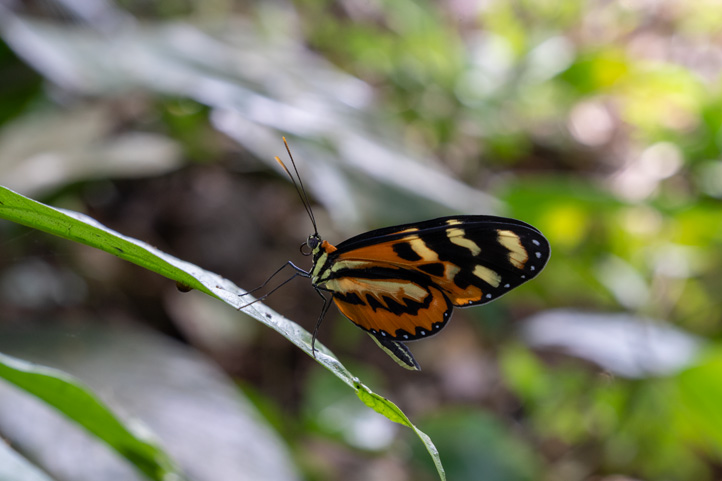
Toucan
Toucans are extremely colorful and interesting birds and I’ve seen many different species here in Colombia.
The large beak, by the way, helps the bird to control its temperature. Sometimes Toucans also rob young birds of nests and eat them.
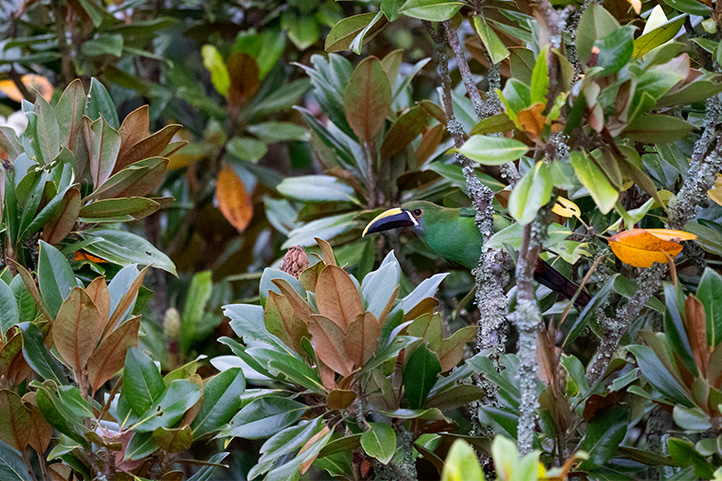
More Nature Tourism Experiences in Colombia
Here is a list of incredible destinations for hiking and other nature activities in Colombia:
- The Best Hiking Routes in Colombia.
- The Most Representative Flowers in Colombia.
- Cacao Guide in Colombia.
Where to see animals in Colombia?
- Colombia’s 31 Most Exciting Animals In Detail: A Wildlife Lover’s Guide
- 25 Superpower Endemic Animals in Colombia
- Birdwatching in Colombia – Basic Knowledge From a PRO
- 100 Animals You Can Find Hiking in Colombia
- Where to see the Jaguar in Colombia
- Where to See Hummingbirds in Colombia
- Where to see Spectacled Bears in Colombia
- Where to see Sloth Bears in Colombia
- Where to see Chiguiros in Colombia
- Where to see the Golden Poison Frog in Colombia
- Where to see the Condor in Colombia
- Where to see Toucans in Colombia
- Where to see Butterflies in Colombia
- Where to see Whales in Colombia
- Where to see Pink Dolphins in Colombia
- Where to see Sharks in Colombia
- Where to see Monkeys in Colombia
- Where to see Snakes in Colombia
- Top 9 Places to See Animals in Colombia
- What to do in the event of a Dangerous Animal Attack in Colombia

